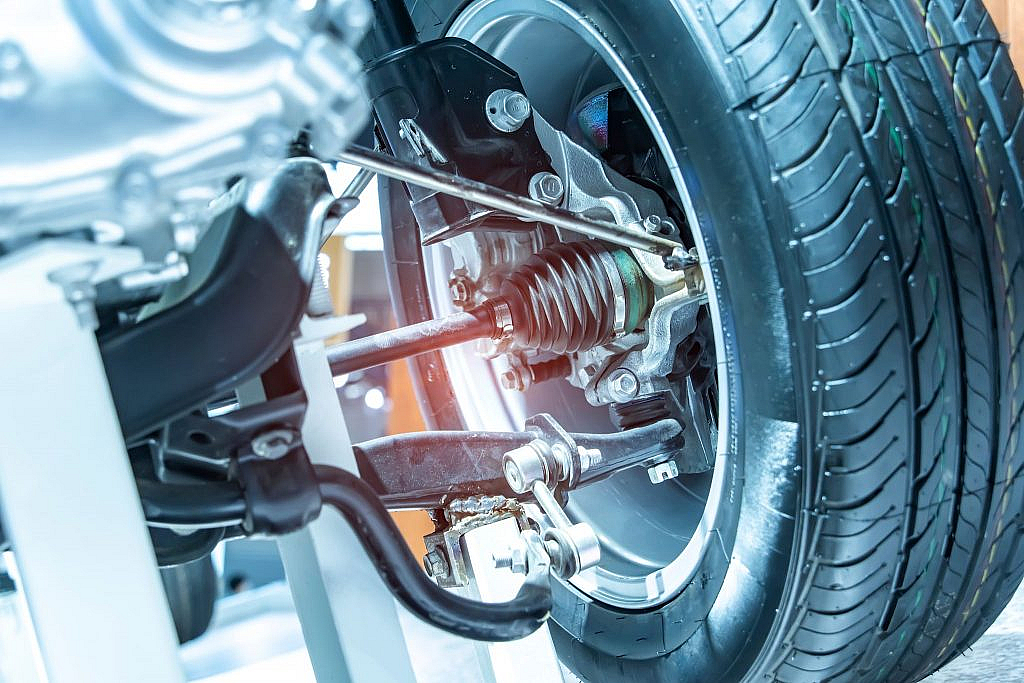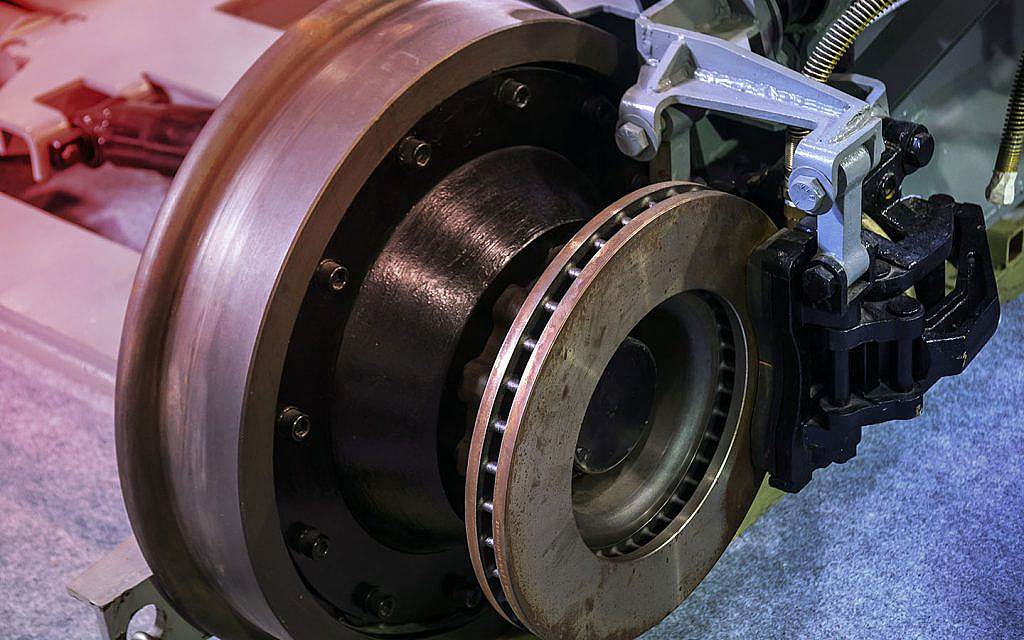Understanding the Braking System of Electric Vehicles (EVs)
- EV Braking Components
- Traditional Brakes vs. EV Brakes
- Types of EV Braking Systems
- Comparing Braking Systems in EVs
- FAQs
Electric vehicles (EVs) are revolutionising the automotive industry, offering an environmentally friendly alternative to traditional gas-powered cars. As EVs continue to grow in popularity, understanding the components that make them operate efficiently is essential. One of the most crucial systems in any vehicle is the braking system and for EVs, it comes with unique characteristics. The braking technology used in EVs differs significantly from that of traditional vehicles, leveraging the unique features of electric powertrains. Let’s delve into the details of the EV braking system, focusing on its components, functionality and advantages.
Basic Components of EV Braking Systems

At the core, the braking system in EVs functions much like that of traditional vehicles. However, due to the unique design and powertrain of EVs, the braking system has been adapted to enhance efficiency and performance. The key components of an EV braking system include:
- Brake Pedal: The brake pedal in an electric car works similarly to that of internal combustion engine (ICE) vehicles. However, the feel of the brake pedal may differ due to regenerative braking.
- Brake Pads and Discs: Traditional brake pads and discs are still present in many EVs, responsible for slowing down or stopping the vehicle through friction.
- Electric Motor and Power Electronics: These components are central to the functioning of regenerative braking.
- Regenerative Braking System: This is perhaps the most distinctive feature of EV braking systems, where the electric motor helps slow down the vehicle, converting the kinetic energy into electrical energy to recharge the battery.
- Brake Fluid and Hydraulic System: These are used to transfer the force from the brake pedal to the electric car brake pads and ensure smooth braking action.
Traditional Brakes vs. EV Brakes
Traditional braking systems in vehicles are typically hydraulic, using brake fluid to transfer force from the brake pedal to the brake pads. These pads then press against the rotors to generate friction and slow down the vehicle. EVs, however, use a combination of advanced braking technologies that enhance performance, efficiency and longevity. While some EVs still utilise traditional friction brakes, many rely on regenerative braking and electrohydraulic systems for optimal operation.
Different Types of EV Braking Systems
Electric vehicles employ a variety of braking systems to ensure safe and efficient deceleration. Contrary to the common types of braking systems, these braking systems are distinct from traditional internal combustion engine (ICE) vehicles due to the unique design and operational characteristics of EVs. The primary types of braking systems in EVs are traditional friction brakes, regenerative braking and electrohydraulic braking systems.
Friction Brakes: Traditional Yet Essential
Although modern EVs rely heavily on regenerative braking, traditional friction brakes are still an essential part of the braking system. These are similar to the brake systems used in conventional gasoline or diesel vehicles.
Friction brakes rely on the application of pressure to brake pads, which clamp down on a rotating disc (the brake rotor). This friction slows down the vehicle and eventually brings it to a stop. The process generates heat, which dissipates as the vehicle slows.
Advantages
- Reliable and Proven Technology: Friction braking has been a cornerstone of vehicle safety for decades, offering a system that drivers are familiar with and trust.
- Strong and Consistent Stopping Power: Friction brakes can generate the force needed to stop vehicles quickly and effectively.
- Effective in Emergencies: When rapid deceleration is required, friction brakes provide the immediate and robust stopping power necessary to ensure safety.
Regenerative Braking: A Game-Changer for EVs

One of the standout features of electric vehicles is regenerative braking, a system designed to capture and convert kinetic energy into electrical energy during braking. This process involves the reversal of the electric motor’s direction, transforming it into a generator that sends energy back to the vehicle’s battery for recharging.
Advantages
- Energy efficiency: By recovering energy that would otherwise be wasted, regenerative braking extends the vehicle’s range between charges.
- Reduced brake wear: Since regenerative braking reduces the reliance on traditional friction brakes, brake pads last longer.
- Eco-friendly: The recovered energy reduces the overall environmental impact of driving an EV.
Regenerative braking has its limitations—it’s less effective at high speeds or during emergency stops, making traditional friction brakes essential for full stopping power. Additionally, the advanced braking systems in EVs contribute to their impressive acceleration and increase the speed of electric cars.
Electrohydraulic Brakes: The Next Generation
Electrohydraulic brakes combine the benefits of both hydraulic and electric systems. This technology is typically used in hybrid and electric vehicles with more complex braking needs due to the inclusion of regenerative braking. In electrohydraulic systems, an electric motor controls the hydraulic system that applies pressure to the brake pads. This setup results in smoother, more consistent braking performance.
The brake system in electric vehicles is still relatively new but offers significant benefits in terms of precision and braking efficiency, particularly in EVs where regenerative braking and traditional brakes need to work in tandem.
Advantages
- Precision and Control: EHB systems offer more precise control over braking forces, improving safety and comfort.
- Energy Efficiency: When combined with regenerative braking, EHB systems can enhance the overall energy recovery process.
- Reduced Brake Wear: By seamlessly integrating regenerative braking, EHB systems reduce reliance on traditional friction brakes, minimizing wear and tear.
Comparing Braking Systems in EVs

When driving an electric car with regenerative braking, factors like vehicle weight, driving conditions and energy efficiency come into play.
| Feature | Traditional Friction Brakes | Regenerative Braking | Electrohydraulic Braking (EHB) |
| Energy Recovery | No | Yes | Yes |
| Effectiveness in Emergency | High | Low | High |
| Maintenance | High (due to pad wear) | Low (reduces brake pad use) | Medium (more complex) |
| Cost | Low | Low | High |
| Braking Power | Consistent and reliable | Moderate | Precise and efficient |
| Driver Adaptation | Standard experience | Different, requires adjustment | More advanced, smoother |
FAQs
How does the braking system work in EV cars?
EVs use regenerative braking to convert kinetic energy into electricity for the battery and friction brakes for additional stopping power, ensuring efficient and reliable braking.
Do electric cars brake automatically?
Yes, many electric cars brake automatically using regenerative braking, which slows the car and recovers energy when the driver lifts off the accelerator. Moreover, all electric cars are automatic, a key feature that enables faster speeds and rapid acceleration. Check out these fastest electric cars and witness the incredible speeds they can achieve.
Do EVs have different brakes?
Yes, EVs use both regenerative brakes, which recover energy and traditional friction brakes for additional stopping power.
EV braking systems are designed to optimise energy recovery, driving experience and vehicle performance. The ideal braking solution for an EV depends on its use case, vehicle weight and performance requirements. Regenerative braking, friction brakes and electrohydraulic brakes each offer distinct benefits and limitations and the combination of these technologies is essential for maximising safety, efficiency and longevity. With the rapid electric car evolution, these braking systems will likely become even more integrated and efficient, further improving the overall driving experience
As the electric vehicle market continues to grow, automakers are constantly innovating to develop the most efficient braking systems. If you are looking to buy a new car in the UAE with an advanced braking system, check out the listings here.
Besides electric, you can also find other used cars for sale in the UAE at dubizzle.
Stay tuned to dubizzle’s auto blog for insights on electric cars and the exciting features of these innovative vehicles.
Comments
Post a Comment